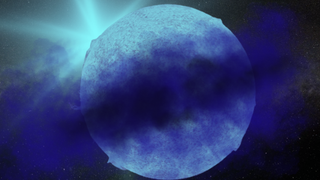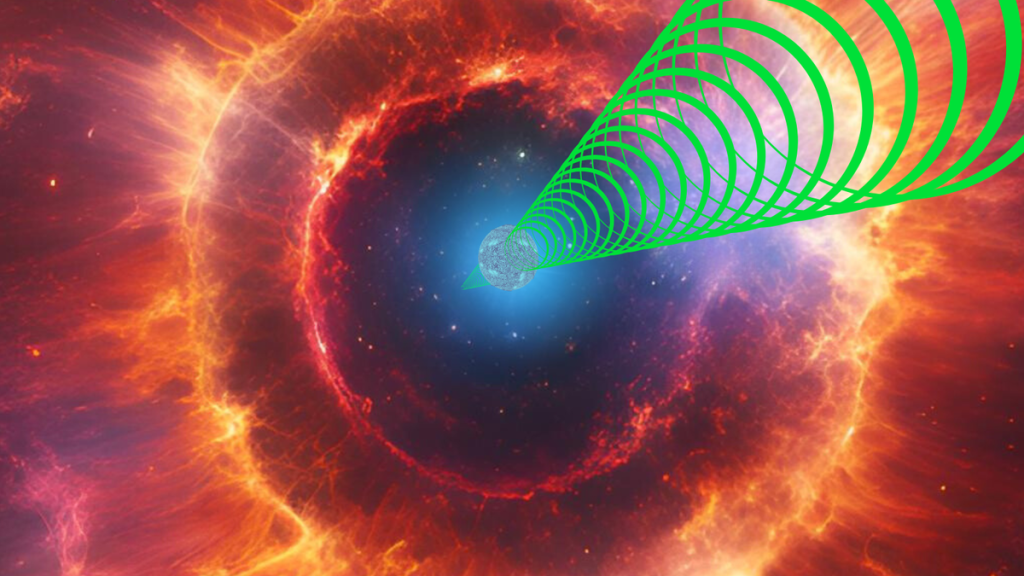Gamma rays emerging from neutron stars at the hearts of supernova explosions could solve the mystery of dark matter — in just 10 seconds. That is, if dark matter is composed of axions, which are hypothetical lightweight particles that are currently the leading candidates for dark matter.
The University of California, Berkeley team behind this theory thinks that if it’s true, a supernova erupting close enough to Earth would allow us to detect its emissions of high-energy light, confirm the mass of axions and therefore wrap up the whole dark matter puzzle.
The required supernova explosion would need to come from a massive star dying and exploding either within the Milky Way or one in of its satellite galaxies, like the Large Magellanic Cloud. These types of events happen every few decades, on average, with the last proximate supernova, designated supernova 1987A, erupting within the Large Magellanic Cloud in 1987.
If the researchers are correct, the search for dark matter, which has troubled astronomers for decades, could be resolved in the very near future with just a little good fortune.
A detection of telltale gamma rays would require humanity’s only space-based gamma-ray telescope, the Fermi Gamma-ray Space Telescope, to point in the direction of the nearby supernova when it explodes. When factoring in Fermi’s field of view, this has a 1 in 10 chance of happening.
The team thinks that just one detection of gamma rays from a neutron star at the center of supernova wreckage would be sufficient to determine the mass of the axion from a wide range of theoretical masses currently suggested for these hypothetical particles. The team is particularly interested in the detection of a type of axion called the QCD axion. Unlike other hypothesized axions, the QCD axion’s mass is dependent on temperature.
“If we were to see a supernova, like supernova 1987A, with a modern gamma-ray telescope, we would be able to detect or rule out this QCD axion,” Benjamin Safdi, research lead author and an associate professor of physics at University of California Berkeley, said in a statement. “And it would all happen within 10 seconds.”
Why gamma rays?
Dark matter constitutes such a troubling problem for scientists because it outweighs the particles of “everyday matter” in the universe by 5 to 1. That’s significant because every star, cosmic dust cloud, moon, asteroid, planet, human, animal and every inanimate object that fills our lives is made up of everyday matter.
Dark matter is also tricky because it doesn’t interact with light — or, if it does, this interaction is so weak that we can’t see it. That makes dark matter effectively invisible. As the search for the particles that could make up dark matter has continued, axions have emerged as the leading candidates.
This is handy because these particles don’t just fit nicely within the Standard Model of particle physics; they also account for other mysteries. For example, they could be the key to unifying Albert Einstein’s theory of gravity, general relativity, and quantum physics.
“It seems almost impossible to have a consistent theory of gravity combined with quantum mechanics that does not have particles like the axion,” explained Safidi.
While many Earth-based experiments have searched the particle zoo to confirm the existence of axions, many scientists have turned their attention to the universe’s most extreme stars, neutron stars, suggesting they could harbor these hypothetical particles.

Neutron stars are born when massive stars run out of fuel needed for nuclear fusion in their cores, and the outward radiation pressure they’ve been generating for billions of years ceases. This means these stars can no longer support themselves against the inward push of their own gravity.
As their cores rapidly collapse, shockwaves rip out into the upper layers of these massive stars, triggering supernovas that blow away most of the stars’ masses. The result are neutron stars with masses between one and two times that of the sun and widths of around 12 miles (20 kilometers).
Scientists have proposed looking for axions created inside neutron stars just after the core-collapse supernova that births them occurs. This effort has mostly focused on axions slowly producing photons (the fundamental particles of light) of gamma rays when the particles encounter the magnetic fields around galaxies.
Safdi and colleagues theorized that this process would not be very efficient at creating gamma rays, at least not in volumes sufficient enough to detect from Earth. They therefore switched their focus to a similar cosmic process, but this time one that occurs in the powerful magnetic fields that surround the neutron stars themselves. They found that this region may efficiently spur a burst of gamma rays that would correspond with the mass of axions and coincide with a burst of “ghost particles,” or neutrinos, from the heart of the respective neutron star.
This burst of axions would last for just 10 seconds after the formation of the neutron star, with the production rate of these hypothetical particles dropping dramatically hours before the star’s outer layers explode.
“This has really led us to think about neutron stars as optimal targets for searching for axions as axion laboratories,” Safdi said. “Neutron stars have a lot of things going for them. They are extremely hot objects. They also host very strong magnetic fields. The strongest magnetic fields in our universe are found around neutron stars, such as magnetars, which have magnetic fields tens of billions of times stronger than anything we can build in the laboratory. That helps convert these axions into observable signals.”
Following this line of inquiry, and considering the rate at which neutron stars cool as they produce axions and neutrinos, Safdi and colleagues determined that the upper mass of the QCD axion would likely be 32 times smaller than the mass of the electron.
In this new work, the team described the production of gamma rays following the core-collapse supernova that created a neutron star and considered the significance of the fact that Fermi didn’t detect gamma rays when supernova 1987A exploded. This led the researchers to conclude that gamma-ray detection from such an explosive event would enable them to spot the QCD axion if it has a mass greater than 10-billionth the mass of the electron. A single detection, they argue, would be sufficient to refocus the search for axions and help confirm their mass.
“The best-case scenario for axions is Fermi catches a supernova. It’s just that the chance of that is small,” Safdi said. “But if Fermi saw it, we’d be able to measure its mass. We’d be able to measure its interaction strength. We’d be able to determine everything we need to know about the axion, and we’d be incredibly confident in the signal because there’s no ordinary matter that could create such an event.”
The team is aware that there is a danger of missing the gamma rays created by axions stemming from the next long-awaited supernova erupts in the vicinity of the Milky Way.
To avoid this outcome, the team is working with gamma-ray-telescope-building scientists to determine how feasible it would be to observe 100% of the sky 24/7. This would ensure that any gamma rays escaping a supernova would be detected. The researchers have proposed that the full-sky gamma-ray satellite constellation be named the Galactic Axion Instrument for Supernova (GALAXIS).
“I think all of us on this paper are stressed about there being a next supernova before we have the right instrumentation,” Safdi said. “It would be a real shame if a supernova went off tomorrow and we missed an opportunity to detect the axion — it might not come back for another 50 years.”
The team’s research was published on Nov. 19 in the journal Physical Review Letters.

